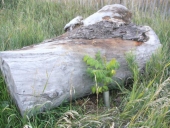




 1
1




 1
1








Subtropical desert (Köppen: BWh)
Elevation: 1090 ft Annual rainfall: 7"




 1
1




 1
1




I'm in the foothills of the San Pedro Mountains in northern New Mexico--at 7600' with about 15" of precipitation, zone 4b historically--growing vegetables for the local farmer's market, working at season-extension, looking to use more permaculture techniques and join with other people around here to start and grow for farmers markets.
 1
1




 1
1




 1
1




Yo!
 1
1










Why work hard when god made so many mongongo nuts? - !Kung
The notion that man must dominate nature emerges directly from the domination of man by man - Murray Bookchin
C'est drôle comme les gens qui se croient instruits éprouvent le besoin de faire chier le monde.-Boris Vian
El hombre es la naturaleza que toma conciencia de sí misma -Elisée Reclus

|
Did you have a mustache before? This tiny ad says it's new.
Homestead Pigs Course
https://permies.com/wiki/365748/Homestead-Pigs
|



